Key takeaways:
- Collaborative learning in music education fosters creativity and develops problem-solving skills by encouraging open communication and shared responsibilities among students.
- Engaging with peers enhances musical interpretation and confidence, illustrating that music is a collective experience that builds community.
- Challenges such as differing opinions, performance pressure, and time management can hinder collaboration but also promote personal growth and resilience.
- The emotional connections and friendships formed during collaborative projects are as valuable as the music produced, contributing to a supportive learning environment.
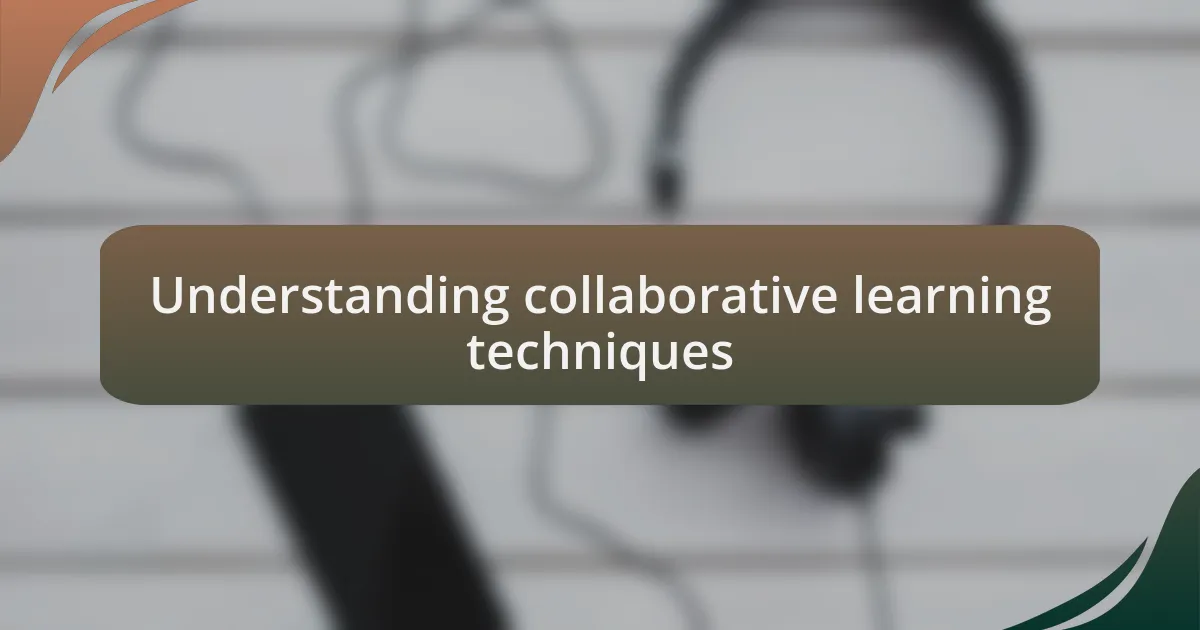
Understanding collaborative learning techniques
Collaborative learning techniques are all about working together to achieve common goals, especially in music education. I remember when I first joined a group project in music class; the synergy we created while composing a piece was electrifying. Have you ever felt that thrill of bouncing ideas off someone and watching them transform into something remarkable together?
At their core, these techniques encourage interaction among students, fostering an environment where creativity flourishes. I often found that when we shared responsibilities—like one person arranging the music while another focused on lyrics—the final product was far more engaging than if I’d tackled it alone. Isn’t it fascinating how collaboration can lead to unexpected outcomes and deeper connections?
Moreover, collaborative learning promotes critical thinking and problem-solving skills. I recall a time when we faced a creative block while rehearsing a piece. By discussing our challenges openly, we discovered new approaches that revitalized our efforts. This experience made me realize that collaboration isn’t just about sharing work; it’s about collaboratively overcoming obstacles to create something beautiful together.
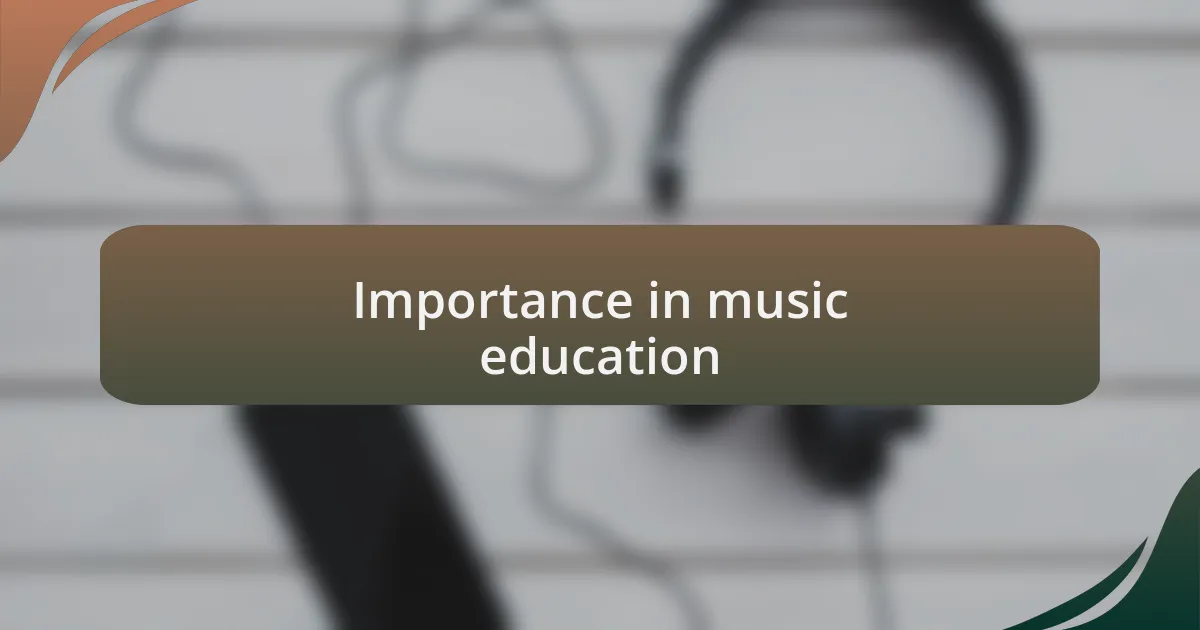
Importance in music education
Collaborative learning in music education holds a vital position because it mirrors the essence of music itself—harmony achieved through diverse contributions. When I played in an ensemble, each musician brought their unique sound, and I vividly remember the chemistry we developed during rehearsals. There’s something magical about blending different perspectives; it teaches us that music is not just an individual endeavor but a collective experience.
Engaging with peers allows us to dive deeper into various musical styles, techniques, and interpretations. I recall a project where we explored jazz improvisation together. The moment we stepped outside our comfort zones and shared our ideas brought a layer of depth that I couldn’t have reached alone. This experience reinforced my belief that collaborative learning breeds not only creativity but also the confidence to express ourselves freely.
Moreover, working together in the music classroom cultivates a sense of community and belonging. I remember feeling isolated during my early days as a musician, but once I joined project teams, I felt supported and encouraged. It made me realize that the journey of learning music isn’t just about mastering notes; it’s about building relationships and sharing a passion with others. Isn’t it rewarding to be part of something larger than ourselves in the pursuit of artistic expression?
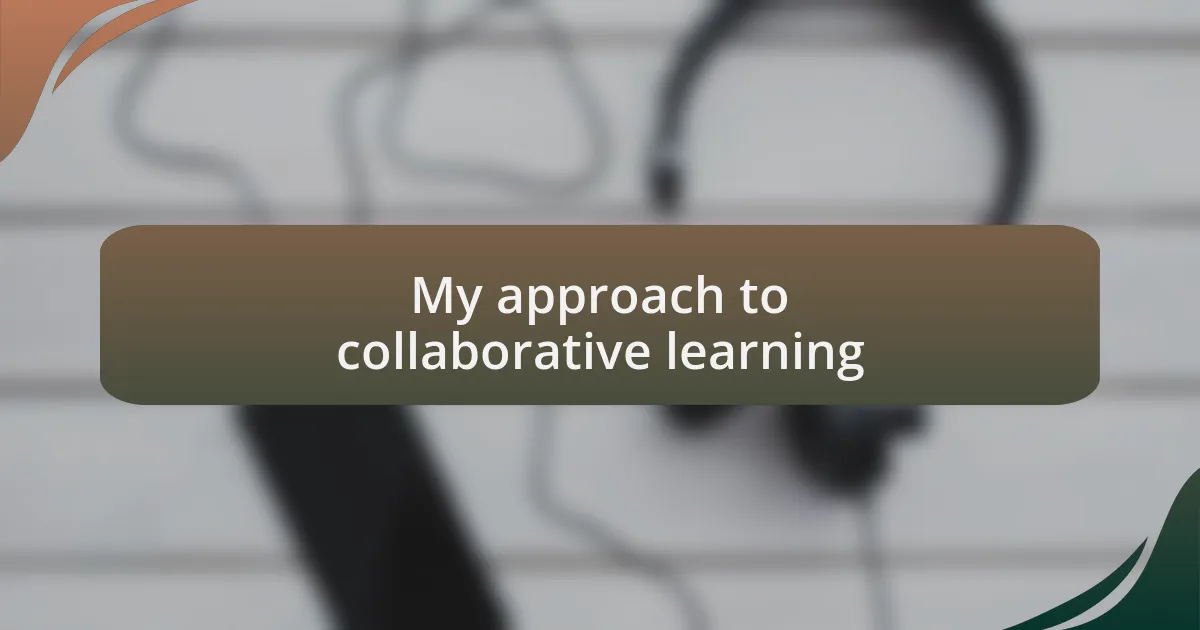
My approach to collaborative learning
When I think about my approach to collaborative learning in music, I can’t help but reflect on the countless jam sessions I participated in. Each time we played together, there was an unspoken understanding of trust and support. Those moments taught me how vital it is to listen—not just to the notes being played, but to the intentions behind them. How often do we stop to really hear what our peers are contributing?
One particularly memorable experience was during a workshop where we arranged a piece as a group. I was initially hesitant to suggest ideas, fearing they might not be well-received. However, when I finally shared my thoughts, the encouraging reactions from my peers sparked a newfound confidence. It dawned on me then—collaborative learning is about creating a space where everyone feels valued, and our ideas can truly flourish when shared.
I’ve found that my approach also involves embracing flexibility. Sometimes, the best arrangements come from discussions that veer off the original plan. I remember when we decided to experiment with unusual instruments, leading to surprisingly beautiful results. Isn’t it fascinating how a little improvisation can lead to unique musical interpretations? That experience reinforced my belief that collaboration thrives in an environment where exploration is welcomed and each contribution enriches the overall outcome.
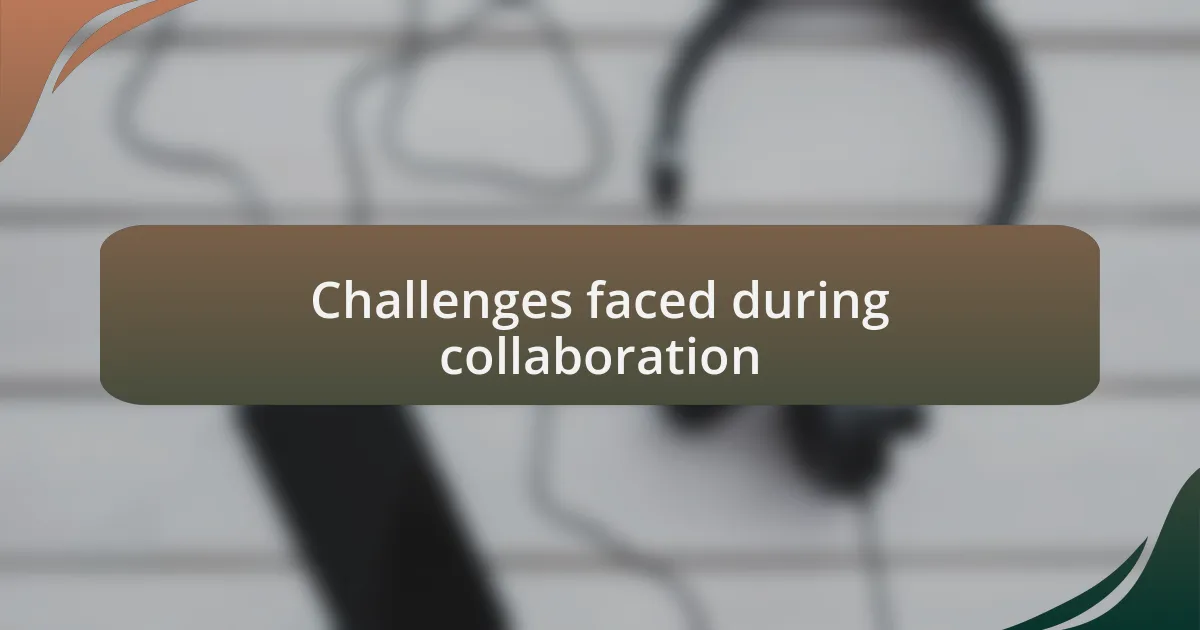
Challenges faced during collaboration
During my collaborative learning experiences, I’ve often faced challenges that test the very fabric of teamwork. For instance, there was a project where differing opinions on musical styles created tension. Discussions became heated, and I remember feeling overwhelmed by the friction among teammates. How do we blend our unique perspectives without compromising our vision? It’s a delicate balance.
Another challenge is the pressure of performance expectations. In one group, I felt a sense of hesitation, as if each note had to be perfect. The fear of judgment from peers was suffocating at times. I had to remind myself that collaboration isn’t about perfection; it’s about growth and support. Did my fear hinder my ability to share creatively? Absolutely, yet it pushed me to confront those insecurities.
Time management is also a lingering hurdle in collaborative projects. Coordinating schedules to practice together can feel like herding cats! I recall one rehearsal where half the group couldn’t make it due to conflicting commitments. This left me wondering, can true collaboration thrive when availability is a constant challenge? It often feels like we’re balancing on a tightrope, striving to harmonize our schedules while keeping the creative energy flowing.
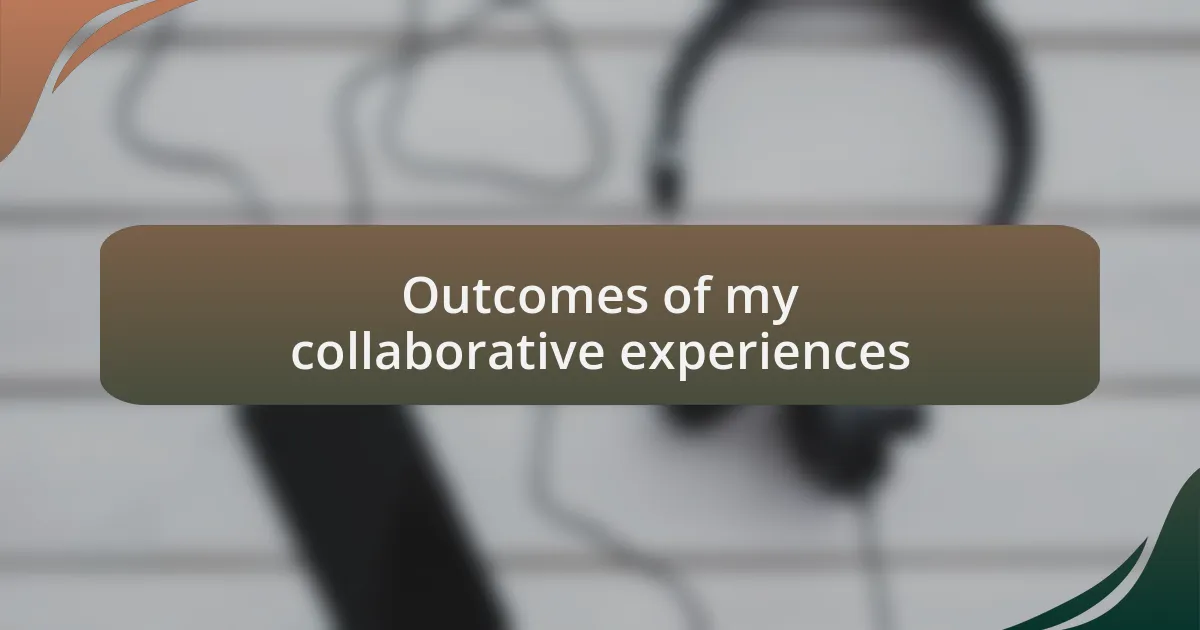
Outcomes of my collaborative experiences
Engaging in collaborative experiences has profoundly affected my growth as a musician. I recall a particularly rewarding project where we mixed genres. My role was to integrate classical elements into a contemporary piece. This challenge opened my eyes to different interpretations of music, showing me how collaboration can elevate our artistic expression. Isn’t it fascinating how blending distinct styles can lead to unexpected and beautiful outcomes?
On a more personal note, the friendships forged through these collaborative efforts have been invaluable. I remember bonding with a fellow musician over our struggles during a rehearsal. Those shared challenges transformed our frustration into appreciation for one another’s talents, teaching me that collaboration extends beyond just the music. What is more crucial than the final product is the community we build along the way.
Moreover, I’ve noticed a tangible increase in my confidence levels thanks to these collaborative encounters. Initially, I held back during group sessions, concerned about voicing my ideas. Over time, as I witnessed supportive reactions to my contributions, I learned that my voice truly mattered. Isn’t that the essence of collaboration? It empowers us to embrace vulnerabilities while celebrating our individual strengths.